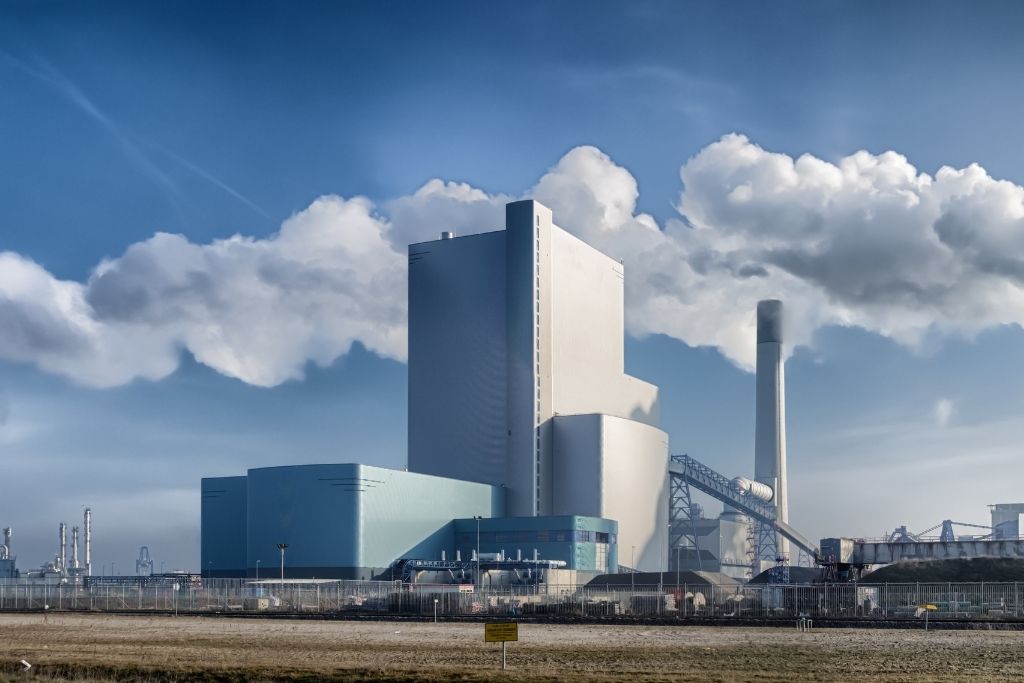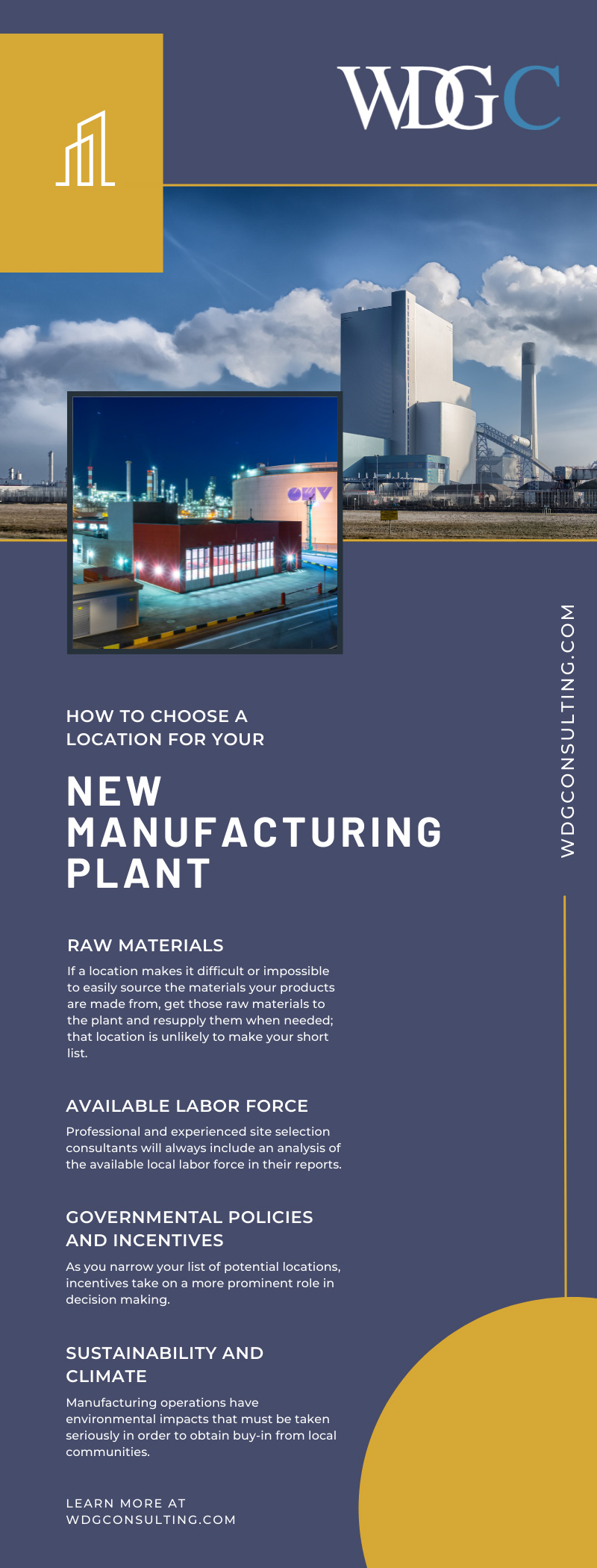How To Choose a Location for Your New Manufacturing Plant

Site selection is critical to business success. Whether your company is planning to commission its first facility or you’re expanding to add additional sites, learning how to choose a location for your new manufacturing plant is essential to a successful opening or move.
A key factor to keep in mind is that site selection is a long-range decision. Once you’ve chosen where to situate a manufacturing plant, it’s unlikely you’ll pick up stakes and move anytime soon, barring some catastrophic event. So while present considerations will influence the decision, always keep an eye on the future as well.
When you’re thinking about how to choose a location for your new manufacturing plant, start with these considerations:
Raw Materials
If a location makes it difficult or impossible to easily source the materials your products are made from, get those raw materials to the plant and resupply them when needed; that location is unlikely to make your short list. Distance from suppliers is one of the first things you should consider.
Infrastructure
Every manufacturing plant will have different infrastructure needs, depending on its size and the product it makes. It’s likely, however, that every business will need:
- Power: Calculate and project the amount and cost of electric, solar, wind, or fuel-generated power the plant will require, both initially and several years into the future. Research the local power producing infrastructure for locations you’re considering. Are the local power grid and fuel lines already at their capacity? Costs for power fluctuate broadly, so this will be an imprecise calculation, but it’s necessary to get an idea of the costs.
- Water: Some forms of manufacturing consume a lot of water. Can the prospective location supply sufficient water for the plant, and does it have the necessary infrastructure to manage wastewater properly?
- Communications: Communication considerations extend far beyond cell service, although that’s an important part of the equation. Communications also include broadband availability, speed, and capacity. While you can store data in the cloud at facilities thousands of miles away, companies are increasingly considering co-locating their data centers with production facilities to speed communications and retain control over information security.
- Roads, Trains, Airports: Will people and goods move easily to and from a facility located in the site you’re assessing? Examine the locale’s plans for transportation improvements and whether they’ll be in place by the time your plant opens.
Available Labor Force
It’s no secret that skilled labor is in short supply. Between retiring “boomers” and a new generation woefully unprepared in STEM fields, employers struggle to find the workforce they need to be productive. Professional and experienced site selection consultants will always include an analysis of the available local labor force in their reports. However, you should also examine local educational and training resources for preparing the future workforce, and whether those resources could realistically supply the number of trained workers your plant will need for years to come.
Costs
Cost is a consideration for any decision a business makes. It’s important to itemize the costs you expect to incur in commissioning a new plant:
- Construction, Lease, or Purchase: Build, rent, or buy? Map out several scenarios. It may always seem cheaper to rent or buy an existing facility than to build one, but costs to retrofit or reconfigure an existing site can climb to the point that building a new site seems reasonable.
- Labor: The so-called “Great Resignation” that occurred during the pandemic, and continues, changed the labor cost dynamic. Workers are less willing to accept low paying jobs with unpredictable schedules.
- Taxes: Tax rates can be another unpredictable variable, but experts who understand the local economic and regulatory atmosphere may be able to project tax rates and costs for your business in the location you’re considering.
Governmental Policies and Incentives
As you narrow your list of potential locations, incentives take on a more prominent role in decision making. State and local governments may have enacted laws that incentivize all prospective employers, or they may, within the bounds of the law, be able to create a customized package of incentives to lure your business to their city or state. These may include discounts on building and land costs, infrastructure improvements, discounts on utility rates, job training programs, tax cuts, and more.
Negotiating an incentives package is best left to an experienced site selection company, with professionals who understand what’s possible and what’s pie in the sky, and who can get the best deal for your business.
Logistics: Transportation and Distribution
Distance from your suppliers for raw materials is part of the logistics issue but so is distance from distributors and customers. If you’ll be exporting nearly all your products, you’ll need proximity to seaports and airports.
If you distribute locally and nationally, then trucks, roads, and rails become critical. Analyze the journey of your product from manufacture to end user, and identify the logistical challenges that may slow or disrupt your supply and distribution chains.
Competition
What kind of facilities are already operating in the areas you’re considering? If they employ a workforce that requires similar skills, what can you offer to prospective employees that’s better?
During site selection, you’ll also be competing against other businesses hoping to win incentives and concessions as part of their decision to locate in the area. Define what would make your manufacturing plant more attractive to the decision makers who have the authority to offer incentives.
Sustainability and Climate
Manufacturing operations have environmental impacts that must be taken seriously in order to obtain buy-in from local communities. Moreover, climate change is a reality that affects plant design. Develop a communications plan that will address NIMBY concerns early in the process.
The state of Texas learned the cost of delaying adaptations to climate change the hard way during the winter of 2021, when freeze-offs at well heads and frozen equipment at gas processing plants, combined with a surge in demand, crippled the natural gas supply system, leaving thousands without gas-generated electric power.
It’s reasonable to examine the potential for climate related disasters at any site on your list, from hurricanes to blizzards.
Community Resources and Quality of Life
Whatever site you end up choosing, many of your employees will take up residence in the selected community. Does the city or town have the resources to attract additional skilled labor? Examine schools, day cares, recreational opportunities and facilities, arts and culture, restaurants and shopping, and institutions of higher education.
These are only some of the many considerations that make up a complex matrix of factors that go into how to choose a location for your new manufacturing plant. For help navigating this process, partner with WDG Consultants. We provide fully integrated consulting advisory services for all aspects of the manufacturing plant site selection process.

